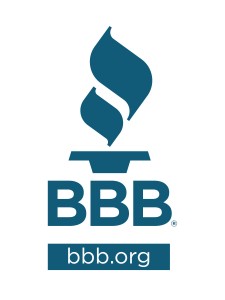 In this economy, it has become the norm for consumers to seek out products and services that will bring them the most bang for their buck. In other words, everyone is looking for the best value. Even an everyday trip to the grocery store involves a search for the best value; why buy three individually packaged rolls of paper towels for $3.00 each when you can get a 6-pack of the same kind for $14.99? As a small business owner, it is important to add value to your own products and services, so your customers are assured that they are making the best decision by patronizing your business.
In this economy, it has become the norm for consumers to seek out products and services that will bring them the most bang for their buck. In other words, everyone is looking for the best value. Even an everyday trip to the grocery store involves a search for the best value; why buy three individually packaged rolls of paper towels for $3.00 each when you can get a 6-pack of the same kind for $14.99? As a small business owner, it is important to add value to your own products and services, so your customers are assured that they are making the best decision by patronizing your business.
Problem: A higher-priced product is perceived as too expensive and rarely sells.
Solution: Highlight the versatility of the product, and educate customers on its many uses, some of which they may be unaware. For example, a cashmere blend sweater wrap in your company’s catalogue is one of the priciest products at $79. Most of the customers who see it and try it on absolutely love it, but don’t want to spend so much on one article of clothing. Add value to the product by highlighting its ability to be worn on its own, as a wrap over a dress or blouse, tied in front or in back, etc. You may also point out that because of the high-end fabric, it will last many years and serve as a staple in one’s closet. Once all of that is considered, the price does not seem so high.
Problem: Most people don’t patronize small businesses because they don’t think they can offer the same conveniences as big box stores.
Solution: Emphasize your excellent customer service and throw in conveniences when possible. For example, if someone wants to make an exchange or purchase an add-on to one of your products, offer personal delivery so the person doesn’t have to make the extra trip. Take it one step further by making a follow-up call a few days later to make sure the customer is completely satisfied. Most people are willing to pay a bit more for top-quality service and convenience. The ability you have to be more personal with your customers is something you should take full advantage of when marketing your business.
Problem: Customers seem skeptical about making the purchase.
Solution: Offer a test drive of your product or service. This is an effective way to demonstrate your confidence in your business as well as an opportunity for you to showcase what you have to offer. One local masseuse who works out of her home offers three-minute “mini-massages” for just $3, but it becomes free when the client decides to either stay or book a future 30-minute or longer session. This strategy allows potential customers to literally try out her service completely risk-free, which works especially well for this kind of business since you can’t “return” a massage if you’re not happy with the results.
Adding value to your business doesn’t have to cost you any money. With a bit more time and effort, you could find yourself an increased customer base that is spreading the good word about your products and services to family and friends. How do you add value to your business? Please share your ideas below!
 Free e-book “Business Owner’s Road Map to Success.” It has over 50 pages of techniques for everything a small business owner needs to master, from business planning and ethical selling to a success mindset. It’s all there and it’s free for you. To get it, just “Like” our Facebook Page here: http://on.fb.me/KsIN6P Pass it on!
Free e-book “Business Owner’s Road Map to Success.” It has over 50 pages of techniques for everything a small business owner needs to master, from business planning and ethical selling to a success mindset. It’s all there and it’s free for you. To get it, just “Like” our Facebook Page here: http://on.fb.me/KsIN6P Pass it on!















